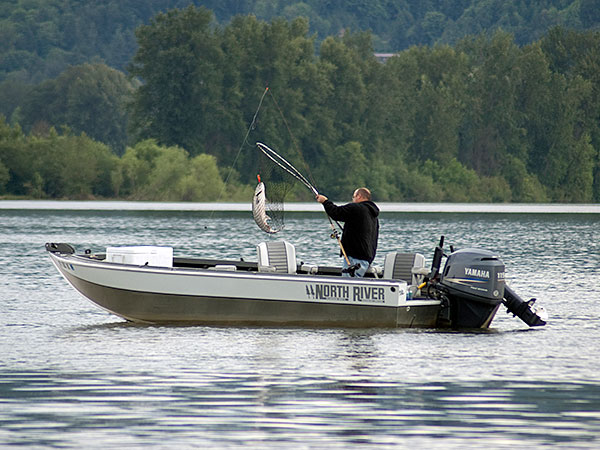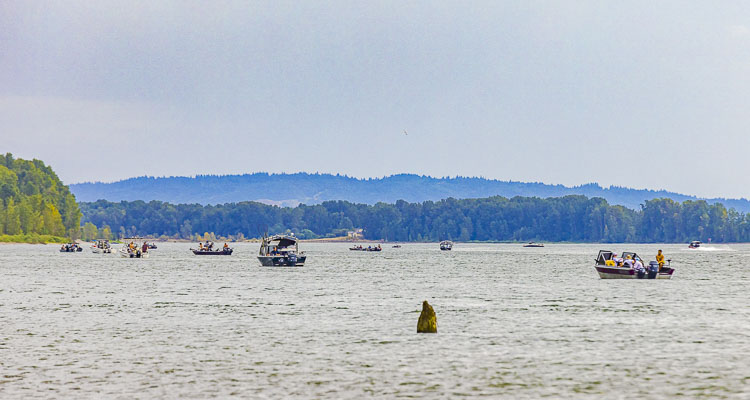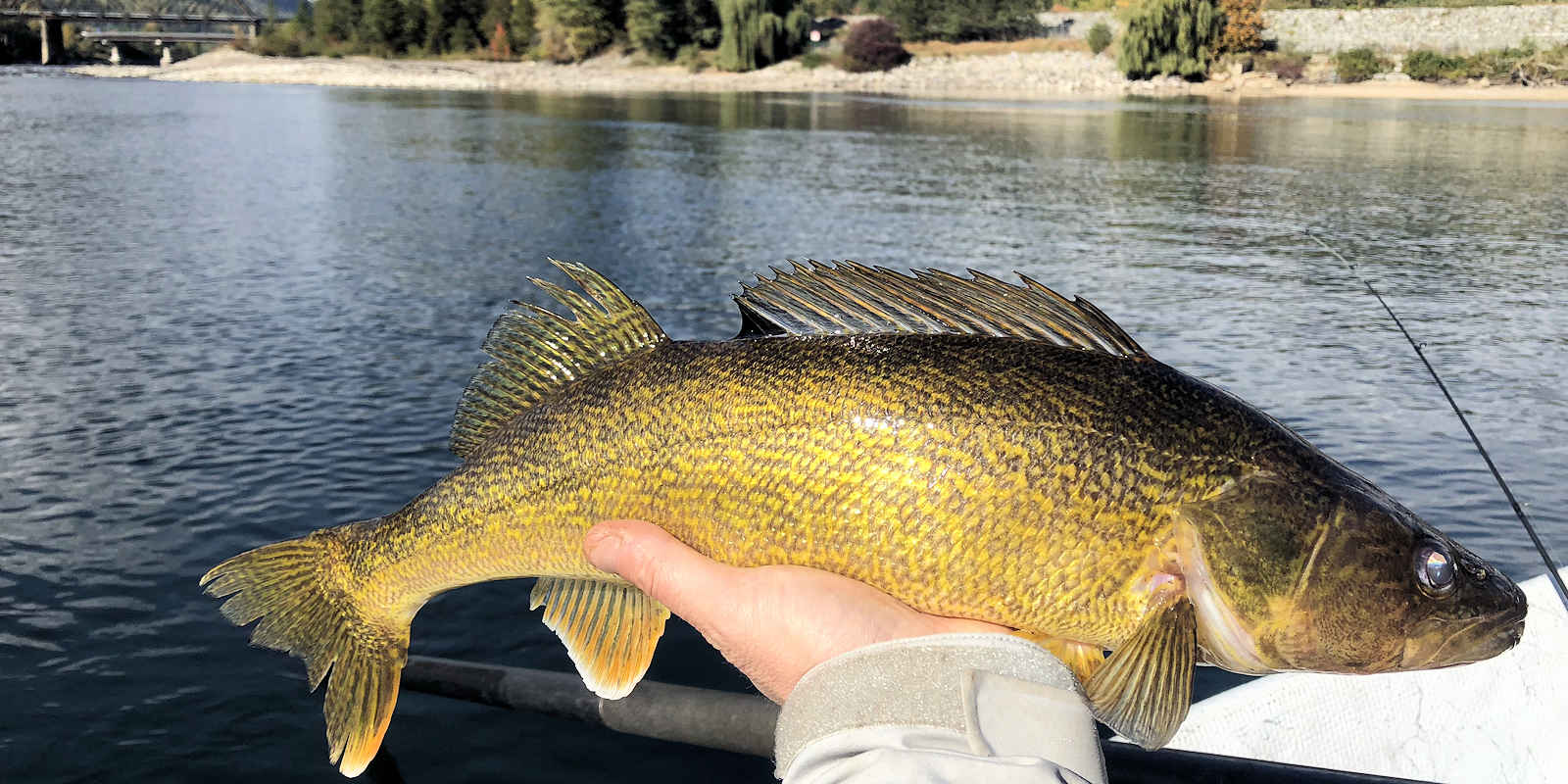Navigating the Waters: Columbia River Fishing Rules and Regulations
Fishing along the Columbia River promises not only a serene and captivating experience but also an opportunity to reel in a diverse array of fish species. However, this iconic river system, which spans several states and provinces, is subject to a complex set of fishing rules and regulations designed to protect its delicate ecosystem and ensure sustainable fishing practices. In this article, we will delve into the essential guidelines that anglers need to be aware of before casting their lines into the Columbia River.
The Columbia River: A Natural Wonder

The Columbia River, with its headwaters in the Canadian Rockies and its mouth at the Pacific Ocean, is one of North America’s most significant waterways. Known for its breathtaking landscapes and abundant fish populations, the river attracts anglers from across the continent. The river is home to various fish species, including salmon, steelhead, sturgeon, walleye, bass, and more. However, due to its vast size and intricate ecosystem, it’s crucial for anglers to familiarize themselves with the specific rules and regulations that govern fishing in different sections of the river.
Understanding Fishing Seasons and Limits

Fishing seasons and catch limits play a vital role in maintaining healthy fish populations and preserving the delicate balance of the river’s ecosystem. These regulations are typically established by state and provincial wildlife agencies in collaboration with local conservation organizations. Fishing seasons are designated time periods during which anglers are allowed to fish for specific species. Catch limits, on the other hand, specify the number and size of fish that an angler is permitted to catch and keep during a given fishing trip.
For example, the Columbia River supports a substantial salmon and steelhead fishery. Each species has its own set of regulations, including size limits, bag limits, and fishing closures during critical spawning periods. These regulations are subject to change annually, so it’s essential for anglers to stay updated on the latest Columbia River fishing rules before embarking on their fishing adventures.
Licensing and Permits
Before casting a line into the Columbia River, anglers must ensure they possess the appropriate fishing licenses and permits. These licenses help fund conservation efforts, research, and habitat restoration projects that contribute to the overall health of the river ecosystem.
The licensing requirements may vary depending on the state or province in which you plan to fish. Typically, a fishing license is required for both residents and non-residents, and there may be separate endorsements or tags required for specific species or fishing methods. Moreover, certain sections of the river might have additional regulations or permits for fishing from boats or access points.
Protecting Endangered Species
The Columbia River watershed is home to various fish species listed as threatened or endangered under the Endangered Species Act. This includes various salmon and steelhead runs, as well as the sturgeon. As a result, anglers are often required to handle these species with care, using barbless hooks and releasing them quickly and unharmed after capture.
Fishing Ethics and Conservation
Responsible fishing practices are essential for the long-term health and vitality of the Columbia River ecosystem. This includes properly disposing of trash, using biodegradable fishing gear, and practicing catch-and-release when necessary. Additionally, respecting fishing closures and staying informed about the latest regulations helps protect fish populations during critical periods.
Staying Informed

Given the dynamic nature of fisheries management, it’s crucial for anglers to stay informed about the latest fishing rules and regulations for the Columbia River. This information is typically available through state and provincial wildlife agency websites, fishing guidebooks, and even local bait shops.
Columbia Fishing Rules and Regulations for Specific Species
Let’s delve into some of the specific rules and regulations that anglers need to be aware of when fishing in the Columbia River.
Salmon and Steelhead Fishing
Salmon and steelhead are two of the most sought-after fish species in the Columbia River, attracting anglers from all around. However, fishing for these species is subject to a range of regulations to ensure their conservation and sustainable populations.

- Seasons and Bag Limits: Fishing seasons for salmon and steelhead vary depending on the specific species and the river section. Bag limits may also differ, allowing anglers to keep a certain number of fish per day. These regulations can change from year to year based on fish run predictions and conservation needs.
- Size Limits: Minimum and maximum size limits may apply to salmon and steelhead. Anglers must familiarize themselves with the size requirements for each species they intend to catch.
- Catch-and-Release: Some areas of the Columbia River enforce catch-and-release regulations for specific times or species. During these periods, anglers must release any caught fish back into the water.
Sturgeon Fishing
Sturgeon, known for their large size and ancient lineage, are another iconic species found in the Columbia River. Due to their slow growth and vulnerability, strict regulations are in place to protect sturgeon populations.
- Slot Limits: Many sections of the Columbia River have slot limits for sturgeon. This means anglers can keep sturgeon within a specific size range, while those outside the range must be released.
- Catch-and-Release Sturgeon: In some areas, sturgeon fishing is strictly catch-and-release, allowing for the preservation of these remarkable fish.
Walleye and Bass Fishing

Walleye and bass are popular gamefish in the Columbia River, attracting anglers with their challenging fights and delicious taste. However, regulations still apply to maintain healthy populations.
- Size and Bag Limits: Specific regulations exist for walleye and bass, including size and bag limits. These limits may vary based on the section of the river.
Gear and Methods
Fishing gear and methods are also subject to regulations to prevent overfishing and protect the environment.
- Barbless Hooks: Using barbless hooks is often required for certain species, including salmon and steelhead. Barbless hooks make it easier to release fish safely and minimize harm.
- Fishing Techniques: Some fishing techniques, like snagging, may be prohibited to ensure fair and sustainable fishing practices.
Wrapping It Up
The Columbia River offers a rich and rewarding fishing experience, but it comes with a responsibility to protect its natural resources. By adhering to fishing rules and regulations, anglers contribute to the conservation of this majestic river system, ensuring that it remains a vibrant and sustainable fishing destination for generations to come. So, before you cast your line into the Columbia River’s waters, take the time to familiarize yourself with the rules — you’ll be contributing to the preservation of an incredible natural treasure.
